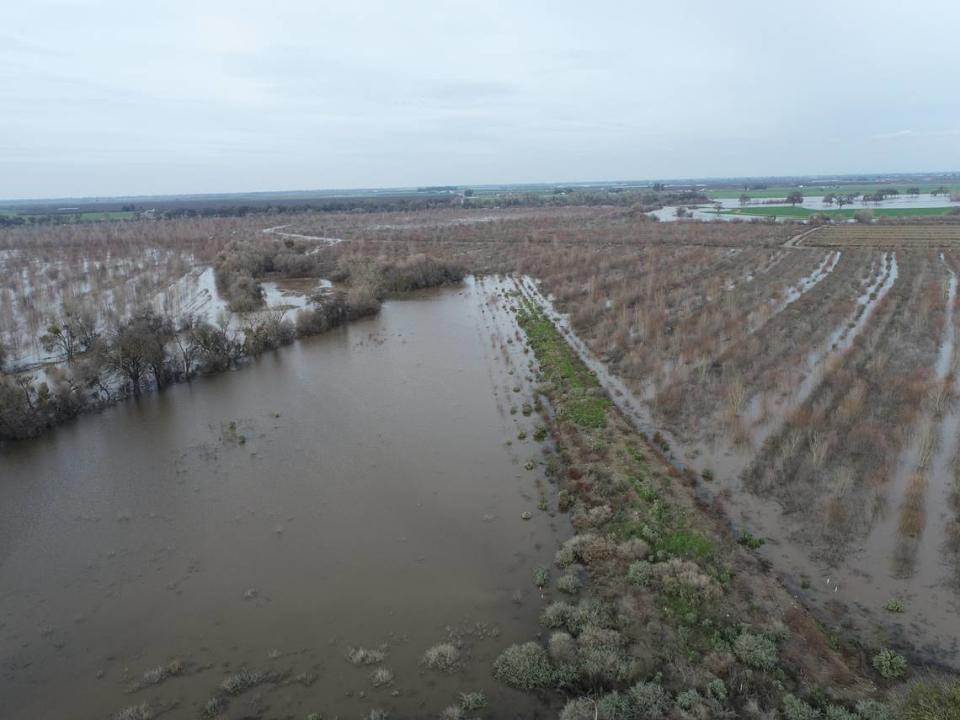Gov. Newsom, please put back the money you just snatched from floodplains | Opinion
What’s worse? Horrifying killer storms or slow death by drought?
California’s climate can be extreme — drought or deluge. Both are deadly, each exacerbating damage caused by the other. Fortunately, some people are doing the necessary, innovative and difficult work to combat drought and deluge at the same time.
Infuriatingly, Gov. Gavin Newsom’s budget proposal abandons some of the most important flood-control, drought-fighting measures taking place in our state. He removed a $40 million allocation approved last year for floodplain restoration — work designed to reduce lethal flooding, store water underground, remove carbon from the atmosphere and create wildlife habitat. This comes on top of a decision two years ago to remove $60 million for other San Joaquin Valley floodplain projects.
This penny-wise, pound-foolish decision kills jobs, endangers the Valley’s poor and sets back some of California’s most ambitious quality-of-life and conservation goals. Delaying or killing floodplain restoration projects does far more harm to farmers, small cities and wildlife than can be justified by any short-term budget savings.
Floodplains are restored by planting native trees, shrubs and grasses, providing perfect habitat for threatened species like the riparian brush rabbit and Swainson’s hawk. As they flood, these areas provide a smorgasbord for young salmon and steelhead. Then floodwaters seep into aquifers — the preferred water-storage method of every hydrologist in the state. Later, that water can be shared by farmers and communities.
Crucially, floodplains provide safety valves for flooding rivers.
This winter’s “endless onslaught” of storms dumped 32 trillion gallons of water on California, swelling rivers, breaking levees, flooding towns and drowning those unable to reach higher ground. The rains undermined roads and loosened roots of drought-weakened trees, causing thousands to topple.
The nine ARkStorms (atmospheric river megastorms) that pummeled California proved one thing: Levees alone will not protect our communities from floods expected in future storms.
The devastated communities of Planada, Wilton and Gonzales were all protected by levees that failed.
The state has 6,000 miles of similar levees, most from several decades to 150 years old. Flood torrents can cause them to melt away. Fixing or building new levees, while often necessary, is expensive and time-consuming. Floodplains offer a better bargain.
The nonprofit River Partners has completed more than 250 floodplain restorations. The largest is Dos Rios Ranch near Modesto, at the confluence of the San Joaquin and Tuolumne rivers in my former Assembly district.

As we toured Dos Rios last summer, River Partners President Julie Rentner explained how poor farming ground becomes spectacular wildlife habitat. Working with farmers, farmworkers and local contractors, River Partners gets buy-in before work begins — lowering the temperature if conflicts arise.
Floodplain restoration requires significant funding — land must be purchased, native plants established, levees pushed back or removed. River Partners and its funding partners invested roughly $45 million at Dos Rios, laying the foundation for California’s first new state park in 11 years.
Last year, I helped secure $40 million to help create many more restoration projects to protect Valley communities in Fresno, Tulare and Merced counties and beyond. Without that funding, those communities are in jeopardy.
As our Valley floods, imagine how much water could have been secured if more such projects were in place. Imagine how much water will be lost if they are not completed.
The governor knows our Valley’s hardships. It’s why he stood with me in announcing a medical school at UC Merced. It’s why I supported his decision to seek voluntary agreements on river flows as an alternative to the water board’s river grab.
The budget process has a long way to go. In light of billions of dollars in flood damage, 22 lives lost and millions of lives disrupted, the state should not just restore the $40 million for floodplain restoration, but increase its investments in projects that work.
Adam Gray formerly represented Merced County and part of Stanislaus County in the California Assembly.

